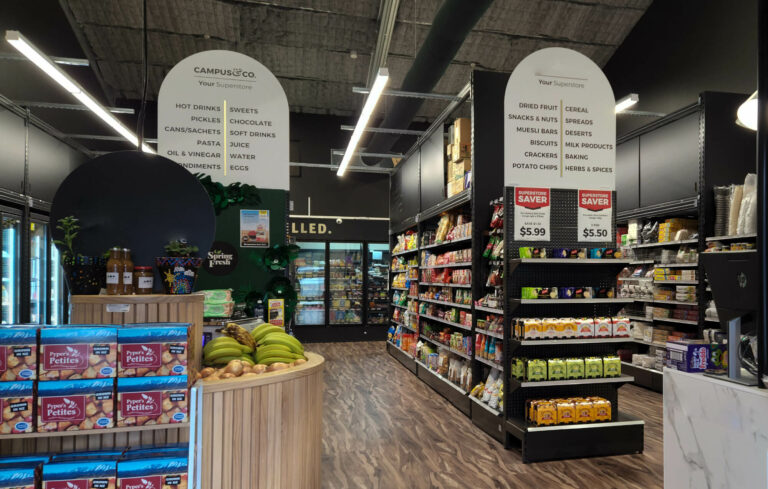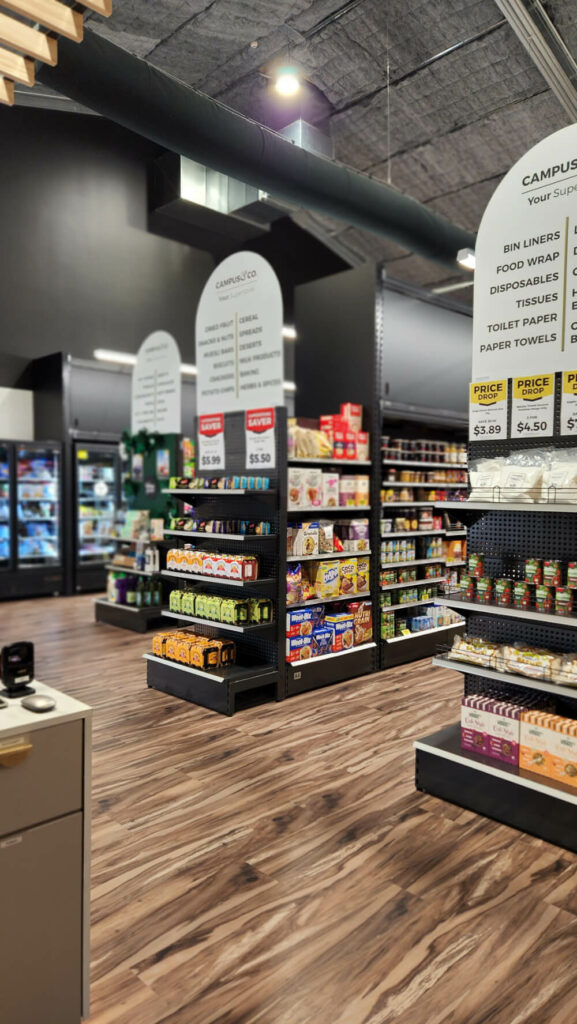Home / Racking and Shelving Insights / How Important is the Supermarket’s Top Shelf?

The success of a retail store depends on many factors, and one is how products are displayed and organised. The store’s layout has a significant role in affecting the buying behaviours of consumers. They may take their time or immediately leave after grabbing just a few products, and it partly depends on how the space makes use of supermarket shelves, racks and other design elements.
As a general rule, products must be easily visible and accessible to customers. It is not because consumers immediately buy what they see, but nowadays, they are more likely to purchase something that they have personally inspected and engaged with.
With that in mind, you might begin to wonder: what about the products on the topmost shelves?
According to merchandising experts, vertical shelving used in supermarkets and grocery stores is divided into four zones: stoop level, touch level, stretch level and eye level.
The Stoop Level
The lowest shelf is called the stoop level, simply because of the action involved in reaching out for the items. This is where most lower margin merchandise is found. To peruse the stoop level shelves, customers would have to crouch or kneel while viewing or inspecting the products. Most of the time, products on the stoop level are ignored because they are not within the shoppers’ field of vision. There are some shoppers who might be uncomfortable looking at items from these shelves, particularly so for the elderly and people with disabilities.
The Touch Level
The second level is the touch level where products are easily within reach. Many supermarkets use these shelves for sweets, snacks, toys and other products catered to children. When items are placed on these shelves, they attract kids who are more likely to ask their parents to buy them.
The Stretch Level
Two levels higher than the touch level shelves is the stretch level. Using the same reasoning for stoop level shelves, items that are placed here are also low margin because this area receives little attention from shoppers. Customers usually miss this spot of the shelves because they’ve found what they needed in the lower shelves and looking upwards takes a bit of effort. What makes the stretch level different from the stoop level is the weight of the items. Supermarkets avoid stocking heavy items on this level to prevent any injuries.
The Eye Level
Inarguably, the most important shelves in a supermarket are at eye level. ‘Eye level is buy level’, as some people have coined it. Products on eye level shelves get 35% more attention than other shelves, making them perfect for products with a high-profit margin. At this level, consumers can easily view and read the product information without even holding the item. This is also the first set of shelves adult shoppers see once they walk through grocery aisles, making the items here very memorable.
Supermarkets have different ways of utilising shelves at eye level. One of its most common uses is for displaying best-selling products. Since high-profit margin items are those that help supermarkets earn more, you’ll see trendy food items or limited releases that are sure-grabs during trips to the grocery.
Other stores use eye level shelves for displaying premium and expensive products. These products can be difficult to sell to the average grocery shopper, especially to those on a budget. But, placing them on eye level shelves is a neat marketing trick and can impact a product’s sales greatly. Don’t be surprised to see lavish wines and high-priced cheese on your nearest supermarket’s eye level shelving (and don’t be surprised if you’d want to buy it).
Sponsored products are also usually found on eye level shelving. Some brands sponsor supermarkets large amounts just to have their products displayed on these shelves. Groceries can also use this level to earn from ad placements and brand marketing strategies to further drive sales.
The fourth and final level is the stretch level which is the top shelf. Just like the eye level, supermarkets have varied uses for shelves at stretch level. Some use the top shelves for the most expensive products while other stores contain a treasure trove of products at discounted prices.
Others use the top shelf as a storage space for seasonal products like beach umbrellas, bikes and seasonal sports gear, which is not an ideal practice considering that bulky products stored on the top shelves could have safety risks.
One smart way of taking advantage of the top shelf is by putting products that set the ‘tone and texture’ of your supermarket. Show your patrons what sets your store apart from the competition. Feature premium and niche products like organic and vegan food options, handmade soaps or exclusively local items.

Maximise the potential of your store’s organisation with a durable and versatile shelving system from Shelving Shop Group. Our Retail Display Shelving range is one of the most popular and widely used systems, with customisable and adjustable options catering to your needs.
For more than 25 years, Shelving Shop has been a trusted manufacturer of supermarket shelving, pallet racking and slatwall panels to a broad range of industries in New Zealand.
View our product range and get in touch with us today.